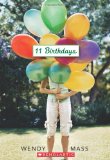The Ordinary Princess
by M.M. Kaye
A beautiful princess is born. A fairy casts a spell. The Ordinary Princess begins exactly as a fairy tale should, but it has a lot more to offer than your ordinary fairy tale. The princess does not enjoy doing the incredibly boring things that a princess must and dreads being married to a boring prince. Her parents despair of ever making her a suitable match and are about to employ a dragon to lure potential suitors. When our heroine learns of this she decides to run away from her life at the palace. The combination of being rejected by yet another superficial suitor and the chance of an innocent dragon being slain in her name is too much for our Princess Amy. As you would expect, she does eventually meet a worthy prince but, (some of) you will be relieved to know that his love does not break any spells; she is treasured for being herself, not a dull but beautiful princess like all the rest.
Filled with humor and familiar fairy tale situations (dragons, disguises, friendships with forest creatures), The Ordinary Princess is entertaining and sweet. While Amy is judged for her looks throughout the book, it is understood that the reader knows the true value of a person is inside, not out.
Most of the more difficult vocabulary is related to the world of princesses and fairy tales: gallant, turrets, councillors and courtiers. There are also made up place names that might trip up young tongues.
Age Recommendation This is on a beginning of third grade reading level, but would appeal to readers as young as K and as old as 4th or 5th grade.
Great for: Anyone! Who shouldn’t read a tale of a princess who isn’t perfectly boring and cookie cutter?
Sex, Nudity, Dating – As you may expect in a fairy tale, the prince kisses the princess in the end.
Profanity – None
Death, Violence and Gore – I believe there is one spanking (or threat of spanking) and a slap.
Drugs, Alcohol and Smoking – None
Frightening or Intense Things – None








